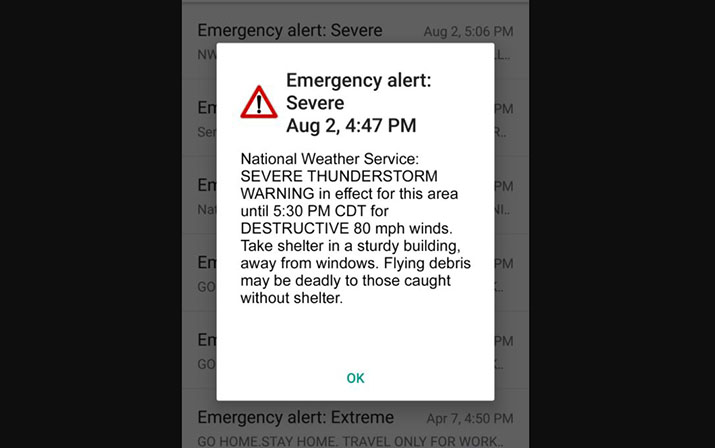When destructive weather is on the way, your cell phone can save you
Aug. 19, 2021

You've heard the old saying: Forewarned is forearmed. In other words, the more you know about a problem ahead of time, the better prepared you can be to deal with it. Severe weather is no exception, which is why the National Weather Service (NWS) has just added a “damage threat" tag to its Severe Thunderstorm Warnings.
You've probably received Wireless Emergency Alerts (WEAs) on your phone before. They told you what type of extreme weather to expect, when the alert would expire, and what sort of emergency action to take, such as finding shelter. The NWS has added an extra category of information: Thunderstorm Damage Threat. There are three levels: base, considerable and destructive. The destructive tag is the only one of the three that will trigger a WEA on your phone.
The base level is the default and covers winds up to 58 mph and/or hail an inch in diameter (that's the size of a quarter). The criteria for the other two tags are as follows:
If a storm falls into two different damage threat categories, it automatically qualifies for the higher category. For example, imagine a thunderstorm has winds in the considerable category (70 mph) but also has hail the size of baseballs. The hail would put the storm into the higher category, destructive, thus triggering a WEA.
If you think this means your phone will be bombarded with thunderstorm alerts, don't worry: On average, only 10 percent of all severe thunderstorms reach the destructive category each year. Those are the storms you hear about on the news—damaging wind events like derechos and intense “supercell" thunderstorms with large hail.
As Minnesotans, we're no strangers to severe thunderstorms and the damage they can bring. The NWS's new thunderstorm damage threat categories will help us stay better informed. If a life-threatening weather event is about to happen, you'll get the information you need to get to safety.

